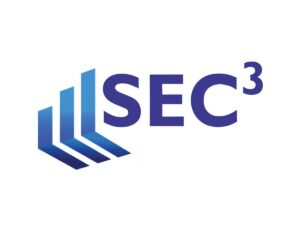Fidelity prepares to release stablecoin tied to the US dollar

Fidelity Investments is gearing up to launch a stablecoin tied to the US dollar, signaling a significant move in its venture into digital assets. This development takes place amidst a growing regulatory acceptance of cryptocurrencies in the United States. The 5.8 trillion dollar behemoth is wrapping up tests on the stablecoin through its Fidelity Digital Assets division, as reported in a recent Financial Times survey.
Concurrently, the company is introducing a groundbreaking class of shares based on Ethereum for its dollar money fund, showcasing a growing interest in blockchain technology. Additionally, Fidelity has filed a request with the Securities and Exchange Commission (SEC) to list an exchange-traded fund (ETF) on Solana, a move that could set a benchmark for future ETFs based on digital assets.
These recent initiatives are part of a wider trend of blockchain adoption in traditional finance. Custodia Bank and Vantage Bank have recently unveiled the first stablecoin issued by a U.S. bank on Ethereum, underscoring the increasing institutional enthusiasm for cryptocurrencies.
Fidelity’s commitment to cryptocurrencies: stablecoin and blockchain funds
Fidelity is ramping up its exploration of stablecoins, a rapidly expanding sector due to the benefits provided by blockchain technology in terms of liquidity and stability. The upcoming stablecoin, pegged to the US dollar, could be pivotal for Fidelity’s expansion in digital payments and decentralized finance.
In addition to the stablecoin, the financial giant is advocating for the integration of blockchain into traditional financial products. Fidelity recently introduced a new share class based on Ethereum called “OnChain Share Class”, linked to the Fidelity Treasury Digital Fund (FYHXX). Approval from the SEC is expected by May 30, and if granted, it could signify a turning point in the adoption of blockchain in established financial sectors.
A signal from politics: regulatory openness and financial innovation
The initiatives by Fidelity and other financial institutions are unfolding within a context of increased regulatory openness in the United States towards the cryptocurrency sector. Following the reelection of President Donald Trump, there has been a noticeable shift in federal policy regarding cryptocurrencies.
Further evidence of this transformation can be seen in the rise in the number of institutional players exploring stablecoin issuance. Custodia Bank and Vantage Bank have launched “Avit”, the first stablecoin issued by a U.S. bank on Ethereum, adhering to the ERC-20 standard. This move aims to incorporate innovative digital tools into traditional finance and could serve as a model for other banks to follow.
ETF on Solana: Fidelity tests the digital asset market
Alongside stablecoins and digital funds, Fidelity has submitted an application to the Cboe BZX Exchange to list a Solana (SOL)-based ETF. The SEC will assess this proposal, and experts believe the outcome of the decision could shape the regulatory treatment of alternative cryptocurrency ETFs.
According to Lingling Jiang, a partner at DWF Labs, Fidelity’s move could serve as a regulatory litmus test to gauge the SEC’s stance on ETFs tied to non-traditional digital assets. Approval of this ETF on Solana could pave the way for new blockchain-based financial products, encouraging greater institutional adoption of cryptocurrencies.
Stablecoin and institutional adoption: a growing market
The stablecoin sector is witnessing rapid growth. In the past year, the number of active wallets using stablecoins has surged by over 50%, from 19.6 million to 30 million. This surge underscores the increasing institutional adoption and integration of decentralized finance with traditional systems.
The spike in stablecoin usage is primarily fueled by:
- Increased utilization in digital payments
- Expansion within the decentralized finance ecosystem (DeFi)
- Enhanced integration with financial institutions
Stablecoins are now essential tools in the digital economy, offering stability and liquidity in a volatile market environment.
The future prospects: regulation and financial innovation
In the United States, there is ongoing dialogue around a new legislation for stablecoins called the GENIUS Act (Guiding and Establishing National Innovation for US Stablecoins). This bill aims to impose stringent rules on stablecoin collateralization and bolster anti-money laundering (AML) compliance obligations.
If enacted, this new regulation could establish a clear framework for stablecoins in the U.S., fostering innovation while upholding financial stability.
In summary, Fidelity and other major financial entities are accelerating the adoption of blockchain while regulatory frameworks adapt to this evolution. The impending launch of a stablecoin pegged to the dollar and the expansion of new digital products signify a crucial juncture in the integration of cryptocurrencies into the global economic landscape.
Source link
#Fidelity #ready #launch #stablecoin #pegged #dollar





